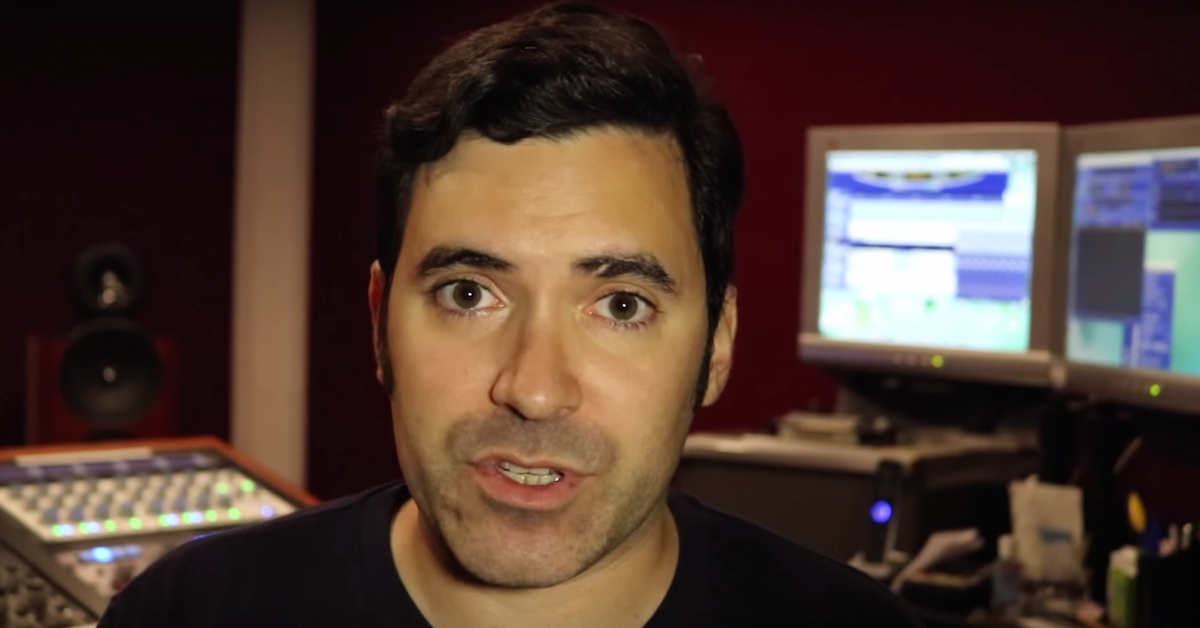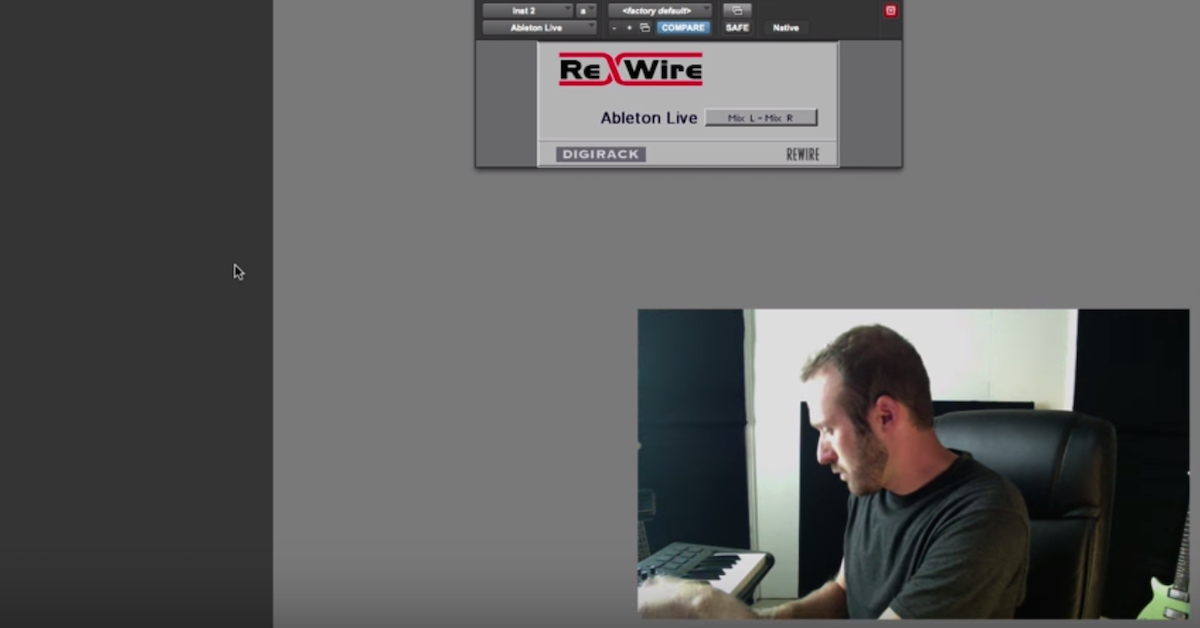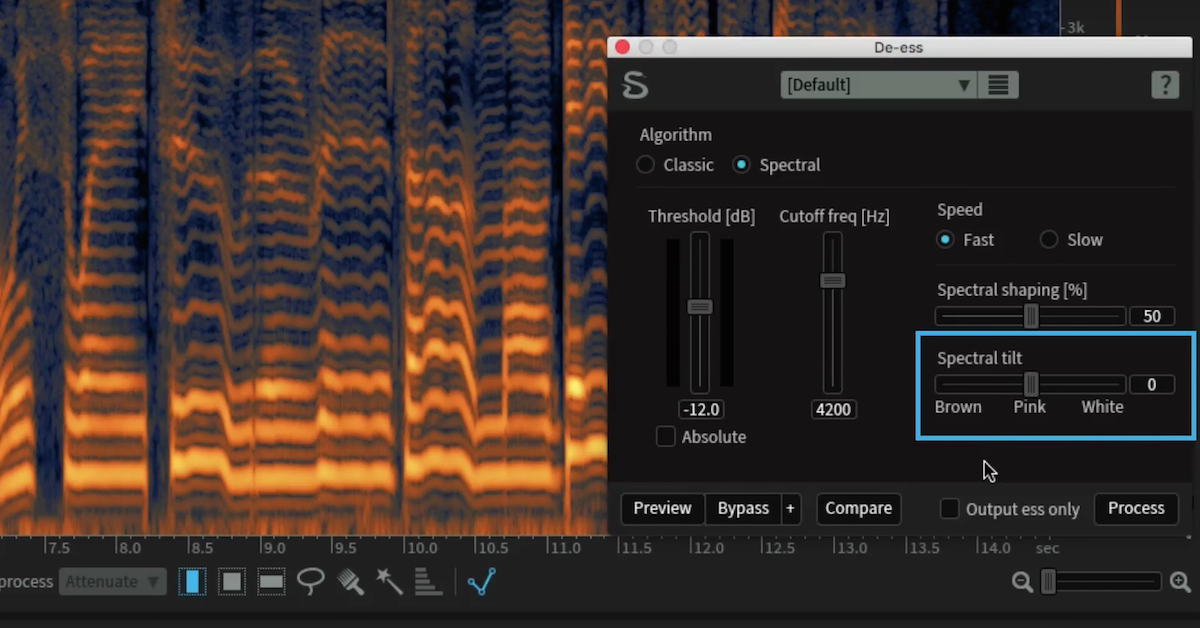Factorsynth: A New Max for Live Device by JJ Burred
Article Content
Factorsynth is a new and unusual Max for Live Device that uses machine learning to decompose or factorize a sound into distinct spectral and temporal elements which can then be modified, randomized and mixed to create complex musical textures.
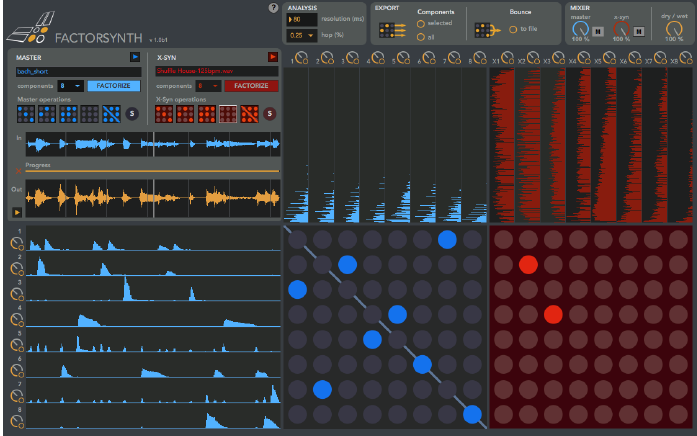
It offers too much functionality to fit in the standard effects window strip in Ableton Live, so it is necessary to click on the device to open the GUI. The is a clip-based device that acts a little confusing at first. Once a clip is loaded in to becomes attached to it as the Master sound and will play whenever the original, unprocessed clip plays (both in Session and Arrangement views).
Once I got things working the effect was quite magical and although the device is not what I would call user-friendly, a little diligence and a quick read of the short but thorough 9-page manual will clear up most, if not all of your questions.
You can also access the cross-synthesis functionality by loading in a second file via drag and drop. This x-syn sound will add additional elements to the sonic result.
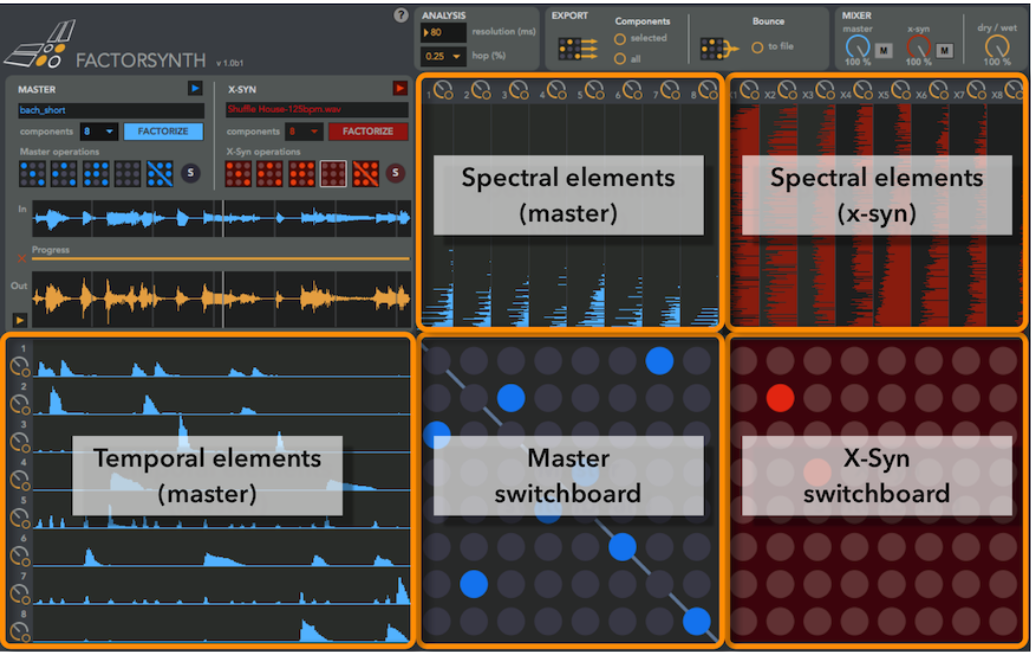
Choosing the right types of sounds to factorize or use as x-syn sounds are crucial to getting a good result. I found using a drum loop as the master sound yielded some delicious glitchy goodness that had me experimenting with the mix controls and drawing in waveforms for several minutes. You can actually overwrite the analyzed temporal or spectral elements by simply drawing in a new waveform. It would be nice have an undo feature but as such is not the case, so only re-factorization will get you back to where you started.
Choosing the right number of components (2 to 30) for the best result is also important in order to get useful factorizations and can be a trial-and-error process.
There are a few presets for the matrix interfaces available that create new unexpected sounds with a single click using various flavors of randomization:

Diagonal: “Add all the diagonal components. For the master sound, this means: reconstruct the original sound. For the x-syn sound, it creates a ‘frequency-coherent’ hybrid sound: since the spectral elements are sorted by brightness, the brightest (resp. darkest) spectral elements of the x-syn sound will get associated with the brightest (resp. darkest) elements of the master sound.”

Scramble “Create random connections, but keeping only one connection per spectral element”

Random: “Create random connections, allowing repetitions”

Clear: “Clear all connections”

Clear diagonal: “Clear the diagonal connections. For the master sound, this means: remove all original
components”
There is an Output waveform display that updates as changes are made.

Other controls include Analysis settings to control the underlying FFT process that drives the system. There you can choose between high temporal or high-frequency resolution depending on the nature of the sound being factorized.
You can export individual elements directly from the device (as 16-bit files), or bounce the output file as well.
Conclusion
Although the analysis or factorization itself does not happen in real time, it can be done in the background as a session is playing. I believe Factorsynth would be a successful stand-alone application and in the context of Ableton Live, it becomes an effective, experimental sound design tool easily integrated with a Live session and capable of quickly generating complex textures and rhythmic timbral variation. If you are a producer looking to create something new or to bring new life to your existing clips, Factorsynth will not disappoint.
Appendix: Some Additional Notes on Cross-Synthesis
Cross-synthesis is defined as “impressing the spectral envelope of one sound on the flattened spectrum of another” (source). There is a carrier signal, usually a sustained sound with rich spectral content and a modulating signal that is imposed on that spectral content. One type of cross-synthesis is seen in a typical vocoder, where a vocal input is used as the modulator of a synth-based sound acting as the carrier signal.
“Linear Predictive Coding (LPC) or linear prediction is a subtractive analysis/resynthesis method that has been extensively used in speech and music applications.” (Roads 200) In this method, a sound is analyzed to create a data set which can then be used to resynthesize an approximation of that sound. Once you have a sound described as a set of data, you can alter parts of the sound such as frequency or amplitude independent of each other. Although the method is not new and has been around for several decades, the precision and speed of the process have expanded along with the speed and sophistication of computer processing.
While LPC can be used to “implement a form of cross-synthesis”, there are other means as well. Roads mentions convolution and phase vocoding to name a few (Roads 208). In essence, cross-synthesis involves taking the elements or sonic components of one sound, as described by a data set generated by some means of analysis and combining or imposing the characteristics or data set of another sound upon the first. Choosing the most appropriate two sounds to use (carrier and modulator) when cross-synthesizing is essential in getting good results. It is a process that thrives on experimentation and can result in unique and unexpected rewards.
Reference:
Roads, Curtis. Computer Music Tutorial. 1996.
Check out my other articles, reviews and interviews
Follow me on Twitter / Instagram / YouTube


